
by Sangeetha | Feb 19, 2024 | hp proliant server, Server
HPE ProLiant DL385 Gen10 server
We are living in the era of Big Data, with data volumes and types constantly expanding across industries. This new data landscape brings with it immense opportunities but also challenges for organizations to effectively collect, store, manage and analyze massive datasets. As the core of any data infrastructure, servers play a crucial role in enabling insights and innovation from data assets.
HP’s latest generation HPE ProLiant DL385 Gen10 server shows impressive advancements that make it highly optimized for the demands of the data-driven digital age. As one of HP’s most powerful single-socket platforms, the 12th generation DL385 pushes the boundaries in dense, high-performance computing through its innovative architecture and design.
At the heart of the DL385 Gen12 is Intel’s 3rd generation Xeon Scalable processors, code-named Ice Lake. Featuring up to 40 cores per socket, the new Platinum and Gold processors bring an unprecedented level of processing power in a compact 1U form factor. They also integrate new enhancements like Intel’s built-in artificial intelligence accelerators.
In addition to raw CPU muscle, the DL385 has been engineered from the ground up with memory-intensive and storage-heavy workflows in mind. It supports an industry-leading 24 DIMM slots, allowing up to 6TB of DDR4 memory – enough capacity to store and analyze massive datasets in memory without slowing down.
Equally impressive are its storage capabilities, with support for up to 48 SAS/SATA drives or 32 NVMe SSDs. The latest generation NVMe drives deliver flash performance of over 7GB/s per drive. Combined with new software-defined storage technologies, organizations can set up highly scalable, flexible storage tiers that optimize for different data access patterns and budgets.
Other highlights of the DL385 Gen12 include expanded I/O with embedded 10GbE and 25GbE as well as hardware-based security features. Its modular architecture and tool-less serviceability further enhance total cost of ownership with ease of upgrades and maintenance.
Overall, the new HP DL385 continues its lineage as a leading platform for data-intensive applications ranging from AI, analytics and databases to VDI and virtualization. Its optimized hardware configuration sets a new bar for single-socket density balanced with scalable performance. As data center footprints shrink while demands grow exponentially, the DL385 delivers a future-proof solution to power our data-driven digital age.
That concludes my overview of how HP’s latest DL385 Gen12 server has been purpose-built from the chip level up to excel at data-centric workloads. Let me know if you need any additional technical perspective or analysis. I’d be happy to discuss specific use cases and workload validation too.
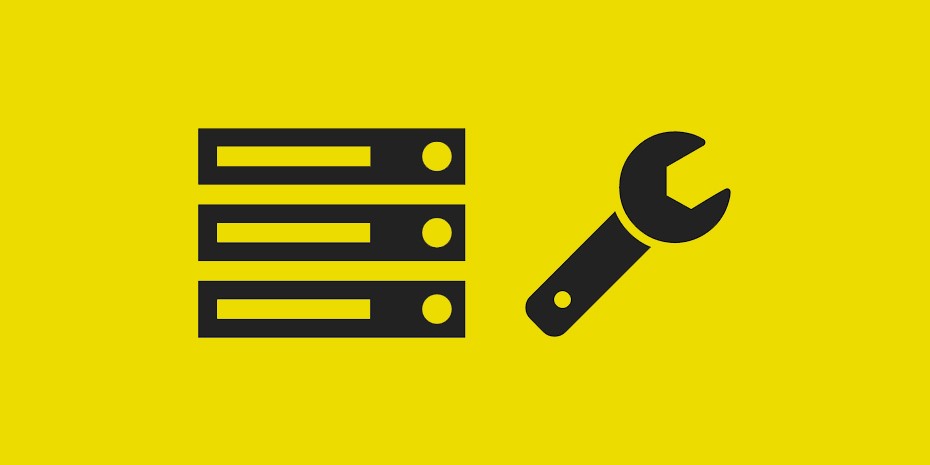
by Sangeetha | Jan 6, 2022 | Server, Server AMC, Server Maintenance
Server maintenance is the process of keeping the server updated and running to ensure that the organization’s computer network is operating smoothly. The network administrator usually does this, and it is essential to the company’s performance. The application software will never run as anticipated without a proper IT service plan. In severe cases, the network can even experience partial or total failure leading to severe losses to your business.
The server is used to describe a box that holds the computer’s processor, memory, and hard drive. It is built to provide maximum computing power while utilizing minimum space. Organizations install multiple servers to increase the processing power available to support several databases, systems, and applications.
Proper server maintenance requires the network administrator to conduct periodic preventive maintenance. This applies to reviewing the server’s performance and any potential security risks and backup protocols. In addition, as part of preventative maintenance, the administrator should ensure that the inbuilt system monitoring utilities are appropriately installed and configured.
So, why is server maintenance essential?
To keep the business’ computer network in optimal and reliable condition, you need to have regular server updates, installation of patches, and diagnostics; in other words, you need a sound server maintenance plan. With this, your business’ special hardware and software will have a greater chance of serving you for a long time. While you may know what should go into the plan, you are better off getting server experts to perform the required maintenance.
While server maintenance plans vary from one business to the other, it is universally essential to have a program specifically designed to ensure the continued optimization of your server and computer network. Through regular data backup, patch installation for updates and bugs, and running the diagnostics, your business’ server will be kept at peak performance, hence minimizing any risks for errors and system failures. In addition, with a maintenance plan that considers your business’s unique objectives and demands, your server will continue to be reliable and efficient, enabling you to run an effective and secure company.
The essential part of a successful and valuable maintenance plan is to design one for you and your business since every organization has its unique goals and server needs. Alongside creating a specified plan, it is also essential to consider how often you want to perform server maintenance. With a solid plan, you will also have a sensible timetable for implementation, thus avoiding prolonged downtimes to your business.
The importance of server maintenance cannot be overemphasized, as, without it, your business cannot reach the zenith of success. But, server maintenance can be very costly if you want to keep a system administrator within your business premises. However, you can cut down on this cost by contracting a network support company to do the job for you. In addition, you can have experts monitoring your servers around the clock through outsourced IT support, thus keeping your business operations at their peak throughout the year.
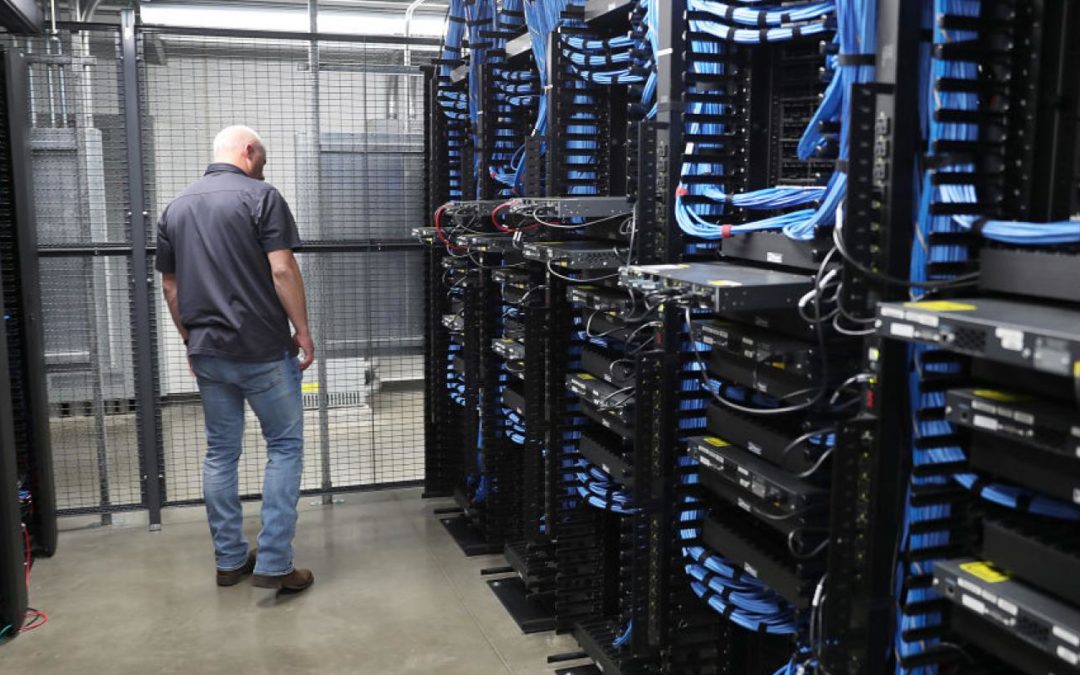
by Sangeetha | Oct 1, 2021 | Server
THE DEMISE OF THE DATA CENTER HAS BEEN GREATLY EXAGGERATED
The cloud was purported to kill personal information centers. Gartner even revealed an editorial back in 2019 that declared, “The data Center Is Dead.” That piece asserted that by 2025, eightieth of enterprises would have finished off their ancient information centers and migrated to the cloud.
On the surface, that prediction is perceived to fit. After all, the cloud is all over nowadays. It is. However, rumors of the info center’s death are greatly exaggerated. Whereas Gartner is usually accurate concerning several things, the organization now appears to own uncomprehensible the mark by a large margin.
THE DATA CENTER IS GROWING, ALIVE, WELL, AND THRIVING
Yes, there has been heaps of interest in moving from on-premises information centers to cloud choices. However, it’s necessary to grasp that this is often not the sole trend to observe. The standard data center is growing in quality because the cloud’s shortcomings and the edges of on-premises solutions become more apparent. Data Center World’s State of the info Center report highlighted some fascinating facts:
• 58% according to a trend far away from the general public cloud and toward colocation or personal information centers.
• 48% of respondents noted they might be building a new information center area within the next twelve to thirty-six months.
That area unit informative trends tell us clearly that not solely is the data center alive and well; however, several organizations area unit finding that the cloud merely doesn’t live up to its plug.
PROBLEMS WITH THE CLOUD
Cloud-based solutions area unit meant to be agile, fast, customizable, and deliver considerably higher prices over ancient information centers. However, the reality is something else entirely, a minimum for a large share of organizations.
MORE THAN HALF OF FIRMS ARE HYBRID ANYWAY
Over five hundredth of organizations take a hybrid-first approach, keeping with the 2019 RightScale State of the Cloud Report. However, will that impact the situation? Perceive that a hybrid cloud could be a combination of public cloud and personal information center practicality. In alternative words, these organizations take a private-first approach. So, whereas there’s a considerable variety of organizations moving to the cloud, it’s approximately the wholesale defection from information centers that some would have the planet believe.
SECURITY issues
Yes, cloud security has evolved significantly in recent years. However, has it done thus enough to mitigate the worst threats? That’s one of the first reasons for organizations to exploit the cloud in the first place.
It’s not concerning attacks, either. Recall that the terrible nature of cloud infrastructure is thus information may be accessed at any time and from anywhere; as exposed information travels on the open net, it becomes prone to stealing or infection by malware. There’s conjointly the prospect of random access merely thanks to the means cloud suppliers operate (they manage information for multiple purchasers at intervals constant cloud environment). Put, if you’re even the slightest amount bit involved concerning security and information safety, the cloud isn’t the proper place for your organization.
DOWNTIME
Downtime could be a reality for each on-premises data center and cloud environment—however, you (or your support provider) area unit up to speed with personal data centers. You lack any management overtime period with cloud suppliers and cannot implement mitigation ways to limit or forestall those occurrences. For those not convinced that period is a difficulty, think about the number of times in 2020 and 2021 that Amazon net Services and Cloud Flare have gone down, exploited businesses around the world within the lurch.
CUSTOMIZATION
From internal apps to customer-facing programs, everything should be customized to fit your brand’s specific necessities. Sadly, several cloud suppliers supply very little to no customization, which means that you may well be stuck conformist to workflows at odds with your organization, or perhaps a scarcity of differentiation in critical areas.
THE BENEFITS OF ON-PREMISES information CENTERS
The cloud offers legerity and time-to-market that area unit trying to search out with on-premises data centers. However, there area unit some necessary edges of ancient data centers that can’t be found with cloud-based solutions to the slightest degree.
DATA VOLUME
Do you ought to transfer giant amounts of knowledge to and from the cloud regularly? If, thus, the chances are high that sensible you’ll expertise a significant quantity of lag, which can affect your processes, productivity, and even profit.
SECURITY
We’ve already highlighted the many shortcomings of the cloud in terms of security. On-premises data centers aren’t hacker-proof. However, they’re somewhat more secure than cloud-based choices. They’re conjointly a lot easier to safeguard in terms of UN agency access to what info, and you have complete management over threat mitigation ways.
SCALABILITY
The cloud is touted for its quantifiability, and it will build it potential to scale services and software system comparatively simply. However, it’s more durable to mount things like storage, ingress, egress, and latency. An on-premises data center will scale back the prices of data storage over time whereas providing ultra-low latency for your applications and guaranteeing quick access to data while not having to stress concerning extra monthly fees.
OVERSIGHT
The cloud is incredibly sensible at decentralizing things. That’s fine in some instances. However, it will cause a scarcity of oversight and governance with every department “doing its own thing.”.” In contrast, promising to democratize information and eliminate silos, the cloud will produce more considerable inefficiencies. With an associate degree on-premises data center, oversight is more accessible, and you’ll additionally cut bloat after you notice it.
IS THE CLOUD RIGHT FOR YOU?
The cloud is here to remain, whether or not we tend to am fond of it or not. However, it’s not a nostrum for each business out there. Simply put, some organizations would like the benefits solely on the market through associate degree on-premises data center or a hybrid approach that mixes the most effective of cloud technology with the dependability, control, and security of on-the-spot data centers.
Navigator Systems offers Data center server maintenance, Storage maintenance and networking hardware maintenance all over India.

by Sangeetha | May 28, 2021 | Server, Server AMC, Server and storage solutions, Storage
Oracle Solaris Operating System Interview Questions
Oracle Solaris is a proprietary Unix operating system originally developed by Sun Microsystems earlier SunOS in 1993. In 2010, after the Sun acquisition by Oracle, it was renamed Oracle Solaris. Solaris is known for its scalability, especially on SPARC systems, and for originating many innovative features such as DTrace, ZFS and Time Slider. Solaris supports SPARC and x86-64 workstations and servers from Oracle and other vendors.
Some of the few Oracle Solaris Operating System Interview Questions are below
What Is An Alternative To The “top” Command On Solaris in interview questions?
Ans:
# prstat –a
Is It Possible To Create Swap In New Hard Disk Without Format?
Ans:
“ No “ without label the drive, you can’t do anything
Is It Possible To Edit The Crontab Using Vi, It Is Not Recommended But It Is Possible By Editing?
Ans:
- # vi /var/spool/cron/crontabs/root
- The command to edit the crontab is #crontab -e
What Is Mean By Paging & Server Average Time in Oracle sun server?
Ans:
If a disk shows consistently high reads/writes along with , the percentage busy (%b) of the disks is greater than 5 percent, and the average service time (svc_t) is greater than 30 milliseconds, then one of the following action needs to be taken
Cannot Open ‘/etc/path_to_inst’” ?
Ans:
System can not find the /etc/path_to_install file. It might be missing or corrupted and needs to be rebuild.
To rebuild this file boot the system with -ar option :
ok>boot -ar
Press enter to select default values for the questions asked during booting and select yes to rebuild /etc/path_to_install
The /etc/path_to_inst on your system does not exist or is empty. Do you want to rebuild this file [n]? y
system will continue booting after rebuilding the file.
How Will You Comment Error Line In /etc/system File ?
Ans:
# Vi /etc/system
(To comment the error line in /etc/system files, we have to use *)
What Is Difference Between Incremental Backup And Differential Backup?
Ans:
Incremental: Only those files will be included which have been changed since the last backup.
Differential: Only those files will be included which have been changed since the last Full backup.
How Many Ufsdump Level?
Ans:
0-9 level
0 = Full Backup
1-9 = Incremental backup of file, That have changed since the last lower level backup.
What Is Different Between Crontab And At Command?
Ans:
Crontab: job can be scheduled
At: Job can be a run once only
Difference Between Ufs And Tar Command?
Ans:
ufsdump:
- Used for complete file system backup.
- It copies every thing from regular files in a file system to special character and block device files.
- It can work on mounted or unmounted file systems.
- Tar:
- Used for single or multiple files backup.
- Can’t backup special character & block device files.
- Works only on mounted file system.
Syntex To Execute A Ufsdump ?
Ans:
# ufsdump 0uf /dev/rmt/1
To Check The Status Of The Media Inserted On The Tape Drive from Oracle Operating System?
Ans:
# mt /dev/rmt/0 status
How Will You Take Ufsdump And Ufsrestore In A Sing Command Line?
Ans:
# ufsdump 0f – /dev/rdsk/c0t0d0s6 | (cd /mnt/haz ufsrestore xf -)
What Is The Physical Device To Check The 2 Nodes Connect In Cluster by oracle system administrator?
Ans:
Physical fiber cable which is connect to the 2 nodes is called a HTEARTBEAT
Where Will Be The Configuration For Metadevice?
Ans:
#/etc/lvm/md.tab
or
#/etc/opt/SUNWmg/md.tab
Explain Raid0, Raid1, Raid3 in Oracle Solaris Operating System interview questions?
Ans:
RAID 0 Concatenation/Striping
RAID 1 Mirroring
RAID 5-Striped array with rotating parity.
- Concatenation: Concatenation is joining of two or more disk slices to add up the disk space. Concatenation is serial in nature i.e. sequential data operations are performed serially on first disk then second disk and so on. Due to serial nature new slices can be added up without having to take the backup of entire concatenated volume, adding slice and restoring backup.
- Striping: Spreading of data over multiple disk drives mainly to enhance the performance by distributing data in alternating chunks – 16 k interleave across the stripes. Sequential data operations are performed in parallel on all the stripes by reading/writing 16k data blocks alternatively form the disk stripes.
- Mirroring: Mirroring provides data redundancy by simultaneously writing data on to two sub mirrors of a mirrored device. A submirror can be a stripe or concatenated volume and a mirror can have three mirrors. Main concern here is that a mirror needs as much as the volume to be mirrored.
- RAID 5: RAID 5 provides data redundancy and advantage of striping and uses less space than mirroring. A RAID 5 is made up of at least three disks, which are striped with parity information written alternately on all the disks. In case of a single disk failure the data can be rebuild using the parity information from the remaining disks.
What Are The Daemons In Nis Server?
Ans:
rpc.yppasswdd
Ypxfrd
rpc.ypupdated
What Are Processing Daemon In Nis?
Ans:
Ypserv
Ypbind
How To Boot The Oracle Sun server from Solaris System In 64 0r 32 Bit Kernel?
Ans:
For 64 bit:
# eeprom boot-file=”/kernel/sparc9/unix
or
OK printenv boot-file
OK settenv boot-file kernel/sparc9/unix
For 32 bit:
# eeprom boot-file=”/kernel/unix
or
OK printenv boot-file
OK settenv boot-file kernel/unix
Which Command To Lock The User Account?
Ans:
# lk username
About US
Navigator System offers end-to-end data center maintenance services that allow you to extend the life of your IT assets.
MANAGED IT SERVICES are
- 24×7 Field Services & Technical Support
- Multi-Vendor Maintenance Programs
- Cloud & Network Migration Services
- Monitoring & Infrastructure Management
- Consulting & Project Management Services
- Network Security
- Network Lifecycle Management
- Asset Recovery Programs
- Spares Management & Repairs for AMC contracts
- Materials Management & Reverse Logistics for AMC contracts
Call our Sales Team: +91 9986288377
Email: sales@navigatorsystem.com
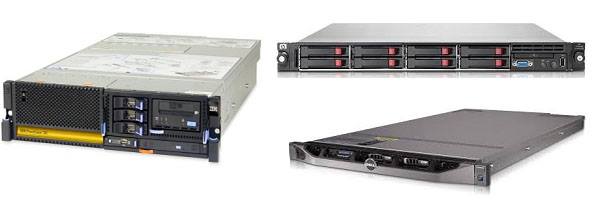
by Sangeetha | Mar 8, 2021 | Dell Server, hp proliant server, Server
When companies need to save money, they often buy used servers to minimize IT expenditures, but whether they purchase servers that perform well is another matter. If a company is considering purchasing used servers, but assistance in choosing pre-owned hardware that offers top-notch performance and reliability is required, the answers below will help.

What is the difference between used hardware and refurbished hardware?
Refurbished hardware is pre-owned hardware that has been reconditioned to look and perform like new. Used hardware is pre-owned hardware that has not undergone reconditioning. Reconditioning improves the performance and reliability of the hardware by replacing problematic parts and cleaning the interior. When pre-owned hardware is employed to support mission-critical IT objectives, purchasing refurbished equipment is the best option.
Is buying hardware at auctions a safe decision?
Unless the buyer has expertise in evaluating hardware, buying hardware at auctions is typically a risky choice. Sellers of refurbished hardware often buy IT equipment from auctions and improve the equipment before they resell it. Consequently, the safest option is to purchase equipment from a professional refurbisher of IT hardware.
What type of warranty is available for pre-owned hardware?
Sellers of used servers offer warranties of various lengths. The most extended warranties generally come with refurbished models and typically last between one month and a year. However, used servers that come with a lifetime warranty are also available. The more critical the hardware is for the business, the more necessary it is to purchase it from a seller offering a lifetime warranty.
What type of technical support is available for pre-owned hardware?
Most sellers of refurbished models provide free technical support before the sale to help the buyer choose the right hardware. Some sellers also offer free technical support after the sale to help the buyer integrate the hardware into the network. However, the customer typically pays for long-term technical support. If the company needs ongoing technical support for specific servers, purchasing the hardware from a seller that allows customers to pre-purchase technical support is a smart idea.
When is used hardware too old to be worth purchasing?
As long as the unit operates effectively and meets the buyer’s needs, it is not too old to purchase. With that said, servers that are old enough to lack contemporaneous IT capabilities such as virtualization are often not useful to modern businesses. The first step in buying any model – whether new or old – establishes what qualifications are needed now and in the future. As long as the hardware offers those capabilities, it is worth purchasing.
Conclusion
Buying used servers helps companies reduce IT expenditures, but unless companies buy hardware that offers excellent performance and reliability, the cost savings from purchasing previously owned hardware are negligible. Investing in used servers that have been refurbished is a perfect way to save money without purchasing low-quality hardware. For more information about buying pre-owned hardware, contact a seller of new and used hardware today.
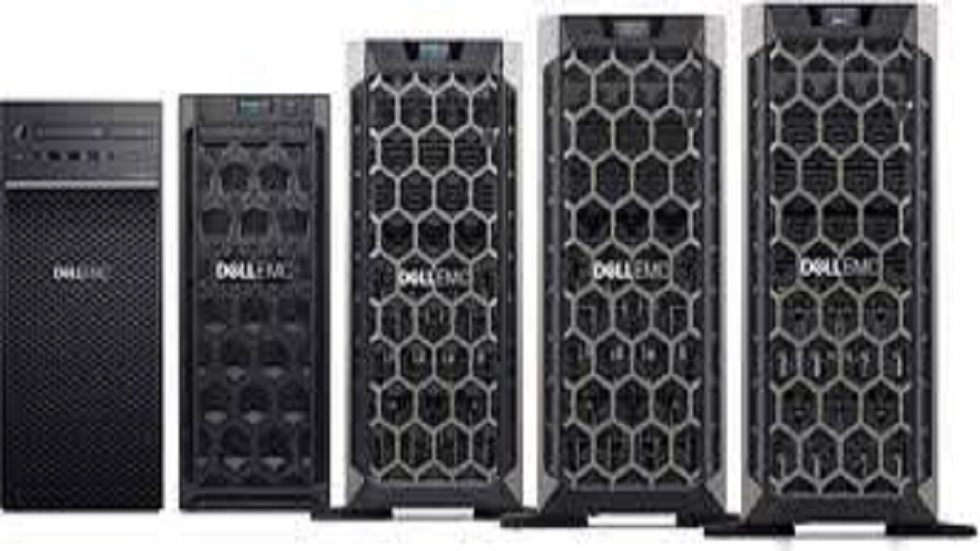
by Sangeetha | Feb 8, 2021 | Server, Tower Server
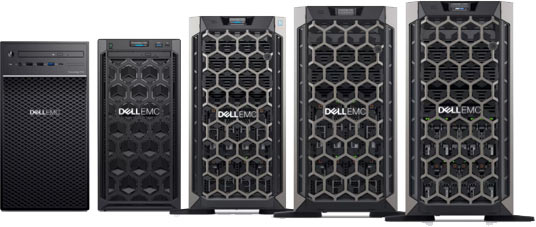
Tower servers are commonly used for networking in businesses. Without a good server, your network will not be as effective and cause problems with daily processes. A server itself is a computer designed to handle specific purposes. The software used on these hardware components is slightly different from your primary desktop computer or laptop and is often referred to as server software. When selecting a server for vital business needs, the decision will significantly be based on its purpose. Most likely, you will either be using a tower or rack server. There is a difference between these two servers. Choosing the wrong one can be disappointing and prevent goals from being accomplished.
A tower server is probably the most basic type you can purchase. They are also the least expensive type of server. Tower designed servers resemble a primary PC and can meet the demands of almost any business network. These hardware components do not have extra features, such as advanced graphics. This is because they are designed to perform a specific task. Typically these work best when your company may need to upgrade shortly. A rack server resembles a flat box and is averagely only one and a half inches in height. The major downside of this server types is limited expandability. These servers work better when a company has defined purposes for each server, limited space, and can afford the number of mounted servers needed.
High Quality, Upgradeable Servers at a Reasonable Price
If tower servers are the best choice for your business, refurbished tower servers can cut down costs while still providing the desired performance and quality. Do not let the word “used” scare you. These servers are just as capable of performing networking and other business data functions as a brand new hardware component. When a server is refurbished, it is restored to its original factory condition. They test it to ensure all parts are functioning as they should be, and it cannot be called refurbished until specific requirements have been met. These servers come with a limited warranty and support. If server problems such as outdated hardware or hardware problems are a concern, they can be leased for additional support and easy replacement. The main benefit of refurbished tower servers is decreased costs for the same quality equipment. This benefit allows your business to take advantage of the newest technology without eating away at the company budget.
Still not convinced that this option is right for your company? If so, ponder this question. Why would you spend more for the same thing? A refurbished server is no different than the one you purchase a brand new from a providing company. They are slightly used but well maintained. Most providers do no sell just any used hardware component. They make sure the product has not been overused or damaged through the various tests run on each server. Refurbished components can prove to be a perfect opportunity for companies on a strict budget and do not make you give up the quality needed to meet your company’s growing demands.







